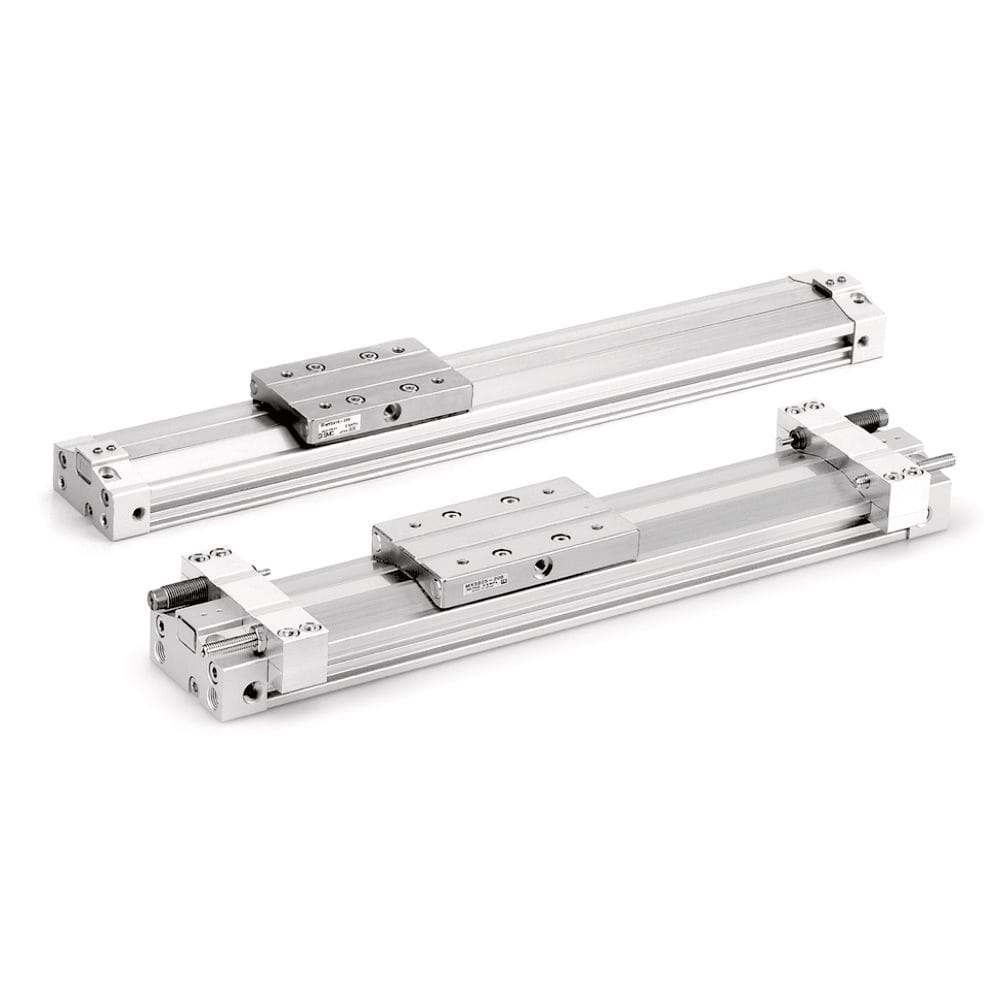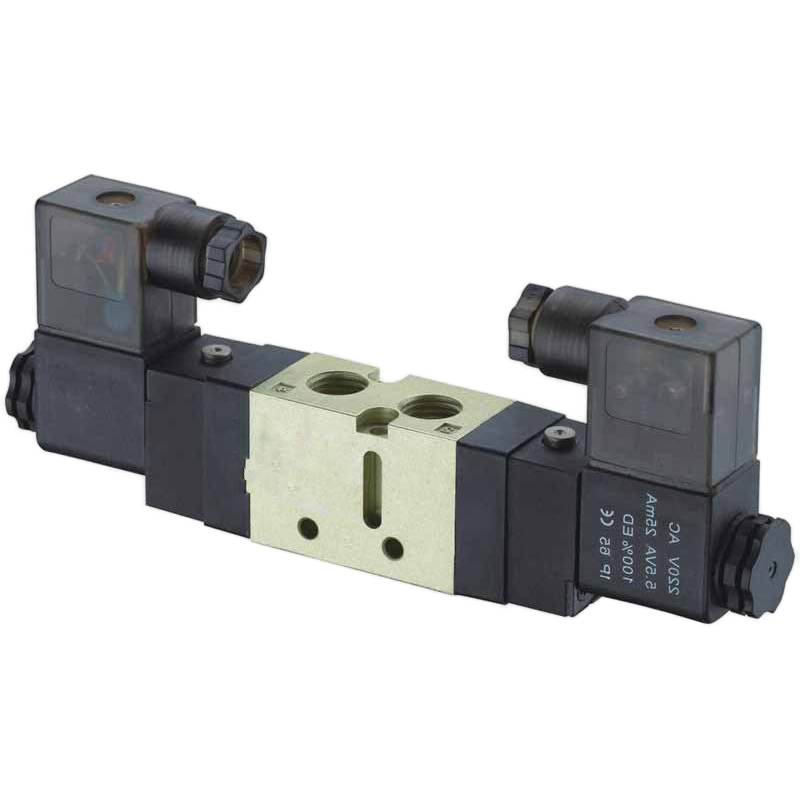When your production line suddenly stops because of valve confusion, every minute costs money. You’re staring at a 4-way 5-port pneumatic valve wondering how this critical component actually controls your rodless air cylinder1 system. The complexity can be overwhelming, especially when downtime is eating into your profits.
A 4-way 5-port pneumatic valve controls airflow direction by using four working ports and one pressure supply port to alternately pressurize and exhaust both sides of a double-acting cylinder2, enabling precise bidirectional movement control in pneumatic systems.
Just last month, I spoke with David, a maintenance engineer from a packaging facility in Michigan, who was struggling with valve selection for his new rodless cylinder installation. His confusion about port configurations had already caused a two-day delay in his project timeline.
Table of Contents
- What Are the 5 Ports in a 4-Way 5-Port Pneumatic Valve?
- How Does the Internal Mechanism Control Airflow Direction?
- Why Do Rodless Cylinders Need 4-Way 5-Port Valves?
- What Are Common Applications and Troubleshooting Tips?
What Are the 5 Ports in a 4-Way 5-Port Pneumatic Valve?
Understanding port configuration is the foundation of valve operation mastery.
The five ports consist of one pressure inlet (P), two working ports (A and B) that connect to cylinder chambers, and two exhaust ports (EA and EB) that allow controlled air release during operation cycles.

Port Identification and Functions
Each port serves a specific purpose in the pneumatic circuit:
| Port | Function | Connection |
|---|---|---|
| P | Pressure Supply | Main air supply line |
| A | Working Port 1 | Cylinder chamber A |
| B | Working Port 2 | Cylinder chamber B |
| EA | Exhaust A | Atmosphere (Port A exhaust) |
| EB | Exhaust B | Atmosphere (Port B exhaust) |
The “4-way” designation refers to the four possible flow paths the valve can create, while “5-port” indicates the total number of connection points. This configuration provides independent exhaust control, which is crucial for smooth operation and precise positioning in rodless pneumatic cylinder applications.
How Does the Internal Mechanism Control Airflow Direction?
The valve’s internal spool or poppet system creates the magic of directional control.
An internal spool slides between two positions, creating alternating flow paths that direct pressurized air to one cylinder chamber while simultaneously exhausting the opposite chamber through its dedicated exhaust port.

Two-Position Operation Cycle
Position 1 (Extend Cycle)
- Pressure port P connects to working port A
- Working port B connects to exhaust port EB
- Cylinder extends as chamber A pressurizes and chamber B exhausts
Position 2 (Retract Cycle)
- Pressure port P connects to working port B
- Working port A connects to exhaust port EA
- Cylinder retracts as chamber B pressurizes and chamber A exhausts
This switching mechanism can be actuated through various methods: manual lever, pneumatic pilot, electrical solenoid, or mechanical cam. At Bepto, we’ve seen customers achieve remarkable precision by selecting the right actuation method for their specific rodless cylinder applications.
Why Do Rodless Cylinders Need 4-Way 5-Port Valves?
Rodless cylinders have unique requirements that make valve selection critical.
Rodless cylinders require precise bidirectional control with independent exhaust capabilities because their internal sealing mechanisms and extended stroke lengths demand controlled pressure transitions to prevent shock loads and ensure smooth operation.

Advantages for Rodless Applications
The separate exhaust ports provide several benefits:
- Controlled Deceleration: Independent exhaust flow control prevents sudden stops
- Reduced Shock: Gradual pressure release protects internal seals
- Improved Positioning: Better control over final positioning accuracy
- Extended Life: Reduced mechanical stress on rodless cylinder components
Sarah, who manages procurement for a German automation company, recently told me how switching to properly sized 4-way 5-port valves extended her rodless cylinder service life by 40%. The controlled exhaust flow eliminated the harsh impacts that were damaging her previous installations.
What Are Common Applications and Troubleshooting Tips?
Real-world applications reveal the versatility and common challenges of these valve systems.
4-way 5-port valves excel in applications requiring precise positioning, such as material handling, packaging machinery, and automated assembly lines, where smooth acceleration and deceleration are essential for product quality and equipment longevity.
Common Applications
- Packaging and labeling equipment
- Material transfer systems
- Automated assembly stations
- Conveyor positioning systems
- Pick-and-place mechanisms
Troubleshooting Guide
| Problem | Likely Cause | Solution |
|---|---|---|
| Slow operation | Restricted exhaust flow | Check exhaust port sizing |
| Jerky movement | Pressure imbalance | Verify supply pressure stability |
| No movement | Blocked ports | Inspect and clean all connections |
| Excessive noise | High exhaust velocity | Install mufflers3 on exhaust ports |
The key to successful implementation lies in proper valve sizing relative to your rodless cylinder’s bore and stroke requirements. Our technical team at Bepto regularly helps customers optimize their valve selections to match their specific performance needs.
Understanding these fundamentals will help you make informed decisions about valve selection and troubleshoot common issues before they impact your production schedule.
FAQs About 4-Way 5-Port Pneumatic Valves
Q: Can I use a 4-way 3-port valve instead of a 5-port for my rodless cylinder?
A 4-way 3-port valve lacks independent exhaust control, which can cause harsh operation and reduced component life in rodless cylinder applications.
Q: How do I determine the correct valve size for my rodless cylinder?
Calculate the required flow rate based on your cylinder bore, stroke length, and desired cycle time, then select a valve with adequate Cv rating.
Q: What’s the difference between solenoid and pilot-operated 4-way 5-port valves?
Solenoid valves offer faster response times and electrical control integration, while pilot-operated valves handle higher flow rates and provide more robust operation in harsh environments.
Q: Why does my rodless cylinder move slowly despite adequate supply pressure?
Check exhaust port restrictions first, as inadequate exhaust flow is often the limiting factor in cylinder speed, not supply pressure.
Q: Can these valves work with different rodless cylinder brands?
Yes, 4-way 5-port valves are compatible with most rodless cylinder brands, but proper sizing and flow characteristics must match your specific application requirements.
-
Discover the design, types, and operational advantages of rodless air cylinders in industrial automation. ↩
-
Understand the operating principle of a double-acting cylinder, which uses compressed air for powered movement in both directions. ↩
-
Understand how pneumatic mufflers, or silencers, are used to safely reduce the noise generated by exhausting compressed air. ↩




